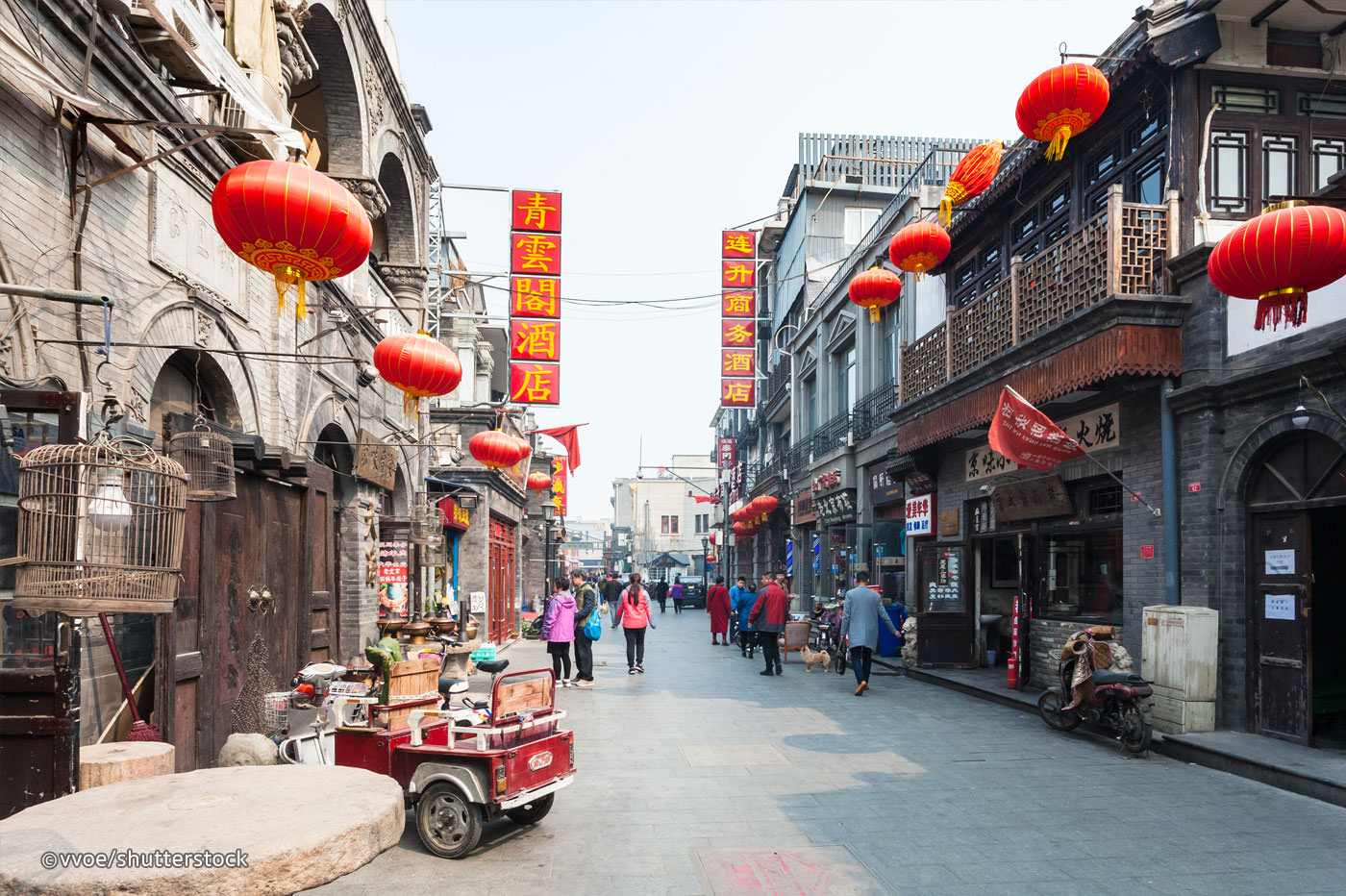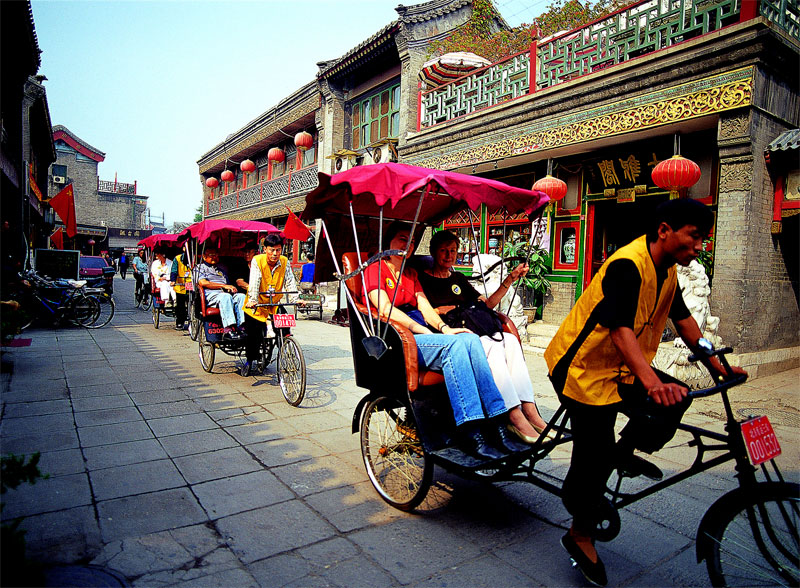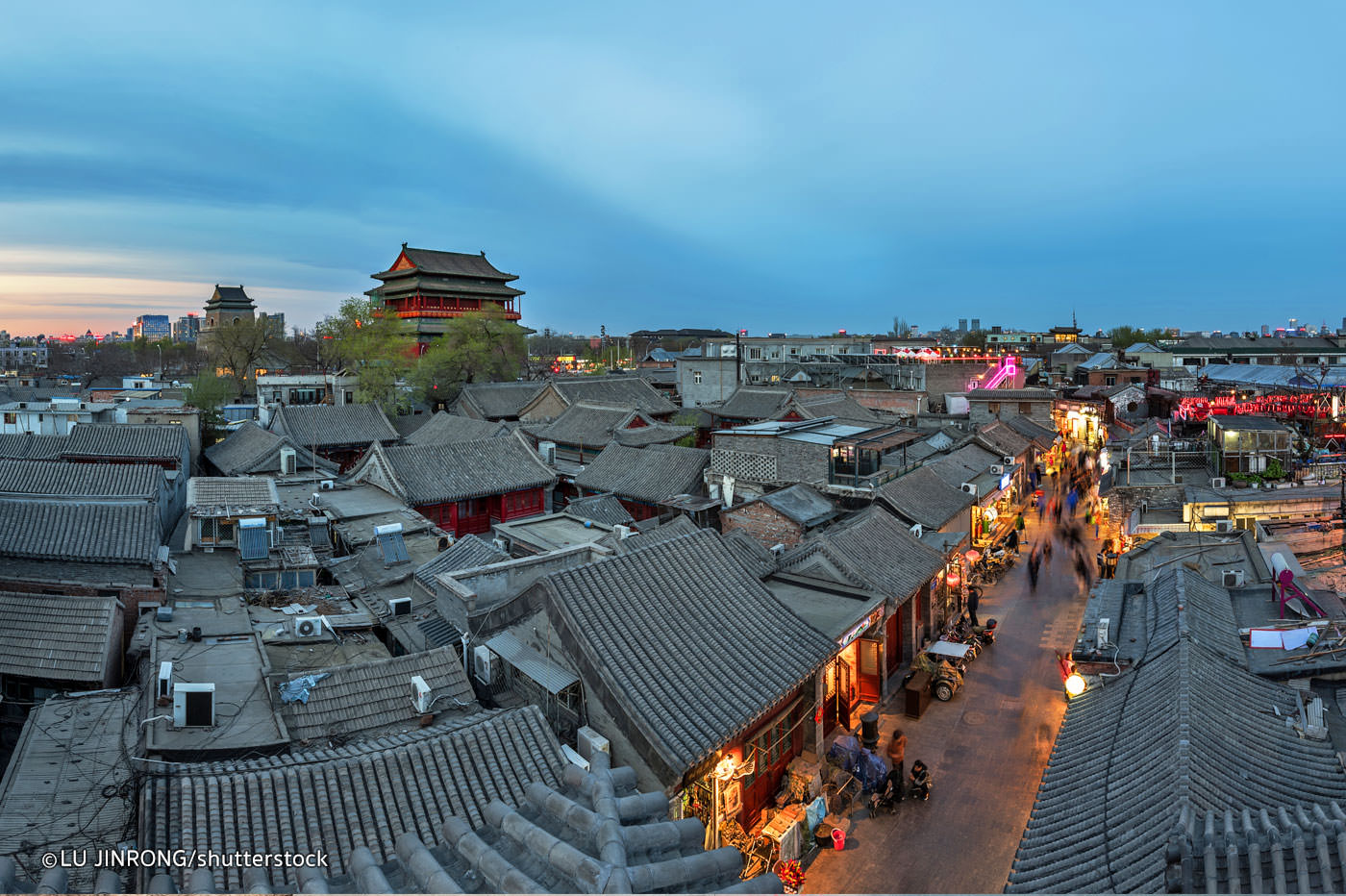Hutongs, meaning ‘water wells’ in Mongolian, refer to a maze of narrow lanes (6-7m wide) formed by traditional Chinese courtyard homes (Siheyuan). At the epicentre of Beijing is the Imperial Palace (Forbidden City); the hutongs branch out along its northern, eastern, southern and western walls. The history of the hutongs is as old as Beijing itself, dating back to the Yuan Dynasty (1271 – 1368). Walking amongst the hutongs is like traveling back in time to the days of Imperial China, when life of a typical Chinese family seldom ventured beyond the walls of their courtyard homes. Due to their strictly defined layout and structure, the hutongs have become a proud symbol of old Beijing. In the mid 1950s, the number of hutongs reached its peak at 6,104. Now the number has dwindled to around 2,000, to make way for modern high-rises and urban planning projects.

Exploring Beijings huitong is an unmissable experience. Go on a walking or cycling tour and delve deep into this alternately ramshackle and genteel, but always magical, world. Best of all, just wander off the main roads in the centre of Beijing into the alleyways that riddle the town within the 2nd Ring Rd. Getting lost is part of the fun of exploring the huitong, and you dont have to worry about finding your way back because you'll never be far from a main road.

Good places to plunge into are the alleys to the west of Houhai Lakes the area around Nanluogu Xiang, the roads branching west off Chaoy
angmen Beixiaojie and Chaoyangmen Nanxiaojie, east of Wangfujing Dajie, and the lanes southwest of Tian'anmen SqK Hiring a bike is by far the best way to explore this historic world. But you want to join a tour, the China Culture Center(p238)runs regullar tours, or can arrange personalised tours. Call for further details, or check the website. Bike Beijing (p236)also does guided huitong tours Many hotels run tours of the huitong, or will point you in the direction of someone who does. Alternatively, any number of pedicab toutsnfest the roads around Houhai Lakes, offering 45-minute or one-hour tours. Such tours typically cost Y60 to 120 per person. If you want an English-speaking rickshaw rider, the Beijing Tourist Information Centre opposite the north gate of Beihai Park can find you one.
Good to Know and What Not to Miss
Try taking a rickshaw tour down the narrow hutongs. This is as close as it gets to experiencing the hutongs of the old days. Ask around and negotiate the price before you hop on one.
Always try to bargain when shopping. Allow yourself to be lost in the maze of hutongs; immerse yourself in history.
One of the most historic sections is the area just south of the Drum Tower (Shichahai).
Most hutongs are accessible by subway. Consult a tourist map for detailed route information.
Zhuanta Hutong (Brick Tower Lane)
An entertainment centre during the Yuan and Ming Dynasties, and a political centre during the Qing Dynasty. Located near South Xisi Street (west of Beihai Lake), Zhuanta Hutong once housed 10 flourishing opera troupes, 20 theatres and residences of two famous writers Lu Xun and Zhang Henshui as well as former Chairman of the People’s Republic of China (1959-1968), Liu Xioqi. Central to the Zhuanta Hutong is the 10-metre-tall tower dedicated to an erudite monk named Wan Song. After several reconstructions, the tower still preserves its original Yuan Dynasty style.
Shichahai
Northwest of the Forbidden City, east of Qinghai Lake, this area is home to a lively nightlife scene as well as upscale restaurants and bars.From Traditional Street, cross the Jing Ding Bridge over Houhai Lake towards the west, to visit one of Beijing’s luxurious residential areas. Highlights include the spectacular Prince Gong’s Mansion (where the last emperor Pu Yi was born) and, to its southwest, the beautifully preserved courtyard residence of legendary opera star Mei Lanfang. South of Jing Ding Bridge, Qianhai East is famous for its Lotus Lane (Tien He Fang). Here, you will find modern, upscale restaurants and bars, an old tea house and a lively clubbing and nightlife scene. Back in the Shichahai area, climb up the Drum Tower for spectacular panoramas of the entire area.
Yandai Xiejie (Smoking Pipe Lane)
South of Drum Tower, between Qianhai and Houhai in the Shichahai area, Smoking Pipe Lane once housed a large concentration of long-stemmed pipe stores from the end of Qing Dynasty. Today, it is an active commercial area with shops selling cultural items such as classic furniture, antiques, tribal costumes, regional crafts and pottery. Apart from souvenir shops, a lineup of traditional eateries, including restaurants, bars, tea houses and cafés have become the main attractions of Yandai Xiejie. At night, when the shops and streets are lit up, the atmosphere is pleasant and welcoming. Facing the picturesque Hou Hai Lake on the west, this is an ideal place to stop for a cup of coffee and to appreciate the scenery.
Liulichang Culture Street (Coloured Glaze Factory Lane)
An artists’ street located south of the Peace (Heping) Gate in Xuanwu District, Liulichang was where glazed tiles were produced for palaces, temples and residences of state officials. Today, it delights visitors with treasure-troves of paintings, artworks, Mao kitsch, bizarre collectibles, old books and anything calligraphy related. With brightly painted doors and eaves and gracefully curved black-tiled roofed buildings, the atmosphere here is redolent of Old Beijing.
Qian Shi Hutong
This hutong is definitely not for the claustrophobic. Formerly the financial district during Qing Dynasty, Qian Shi Hutong (located in Dong Sheng District, east of the Forbidden City) is well-known as the narrowest hutong, at 70cm across for the most part and only 40cm across near Qianmen (Front Gate). Some say the narrow lanes were designed to be thief-proof, as the area used to house up to 26 mints, supplying coins to almost every bank in the city. No longer the financial centre, as all buildings were burned down during the 1900 Boxer Rebellion, Qian Shi today is a residential area. Most buildings can be traced back to the late Qing Period.
Ju'er Hutong
This former lane with a history dating back to the Ming Dynasty is where old and new Beijing meet. In 1987, the northern part of Ju’er Hutong (north of the Forbidden City, east of Huhai Lake) underwent a total refurbishment in an experimental project called The Ju'er Hutong Courtyard Housing Project, spearheaded by Professor Wu Laingyong of the renowned Tsinghua University. The project aimed at preserving traditional courtyard homes but at the same time modernised them into apartment complexes with improved ventilation, drainage and sanitary systems as well as additional floors. The success of this project means a promising future for the hutongs, as they will find their place alongside Beijing’s glass-and-steel high-rises, instead of facing demolition as originally feared. Today, the refurbished section is a popular district among visitors.


